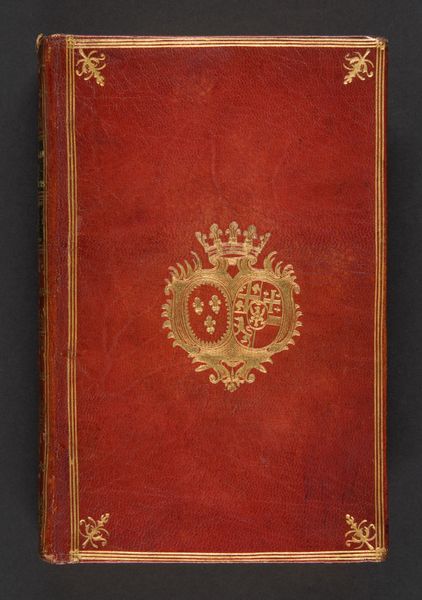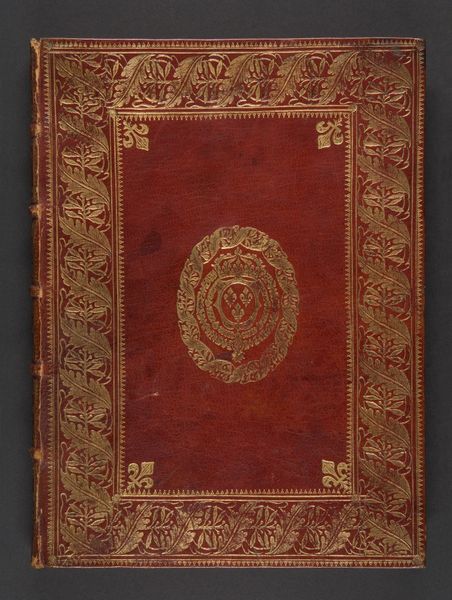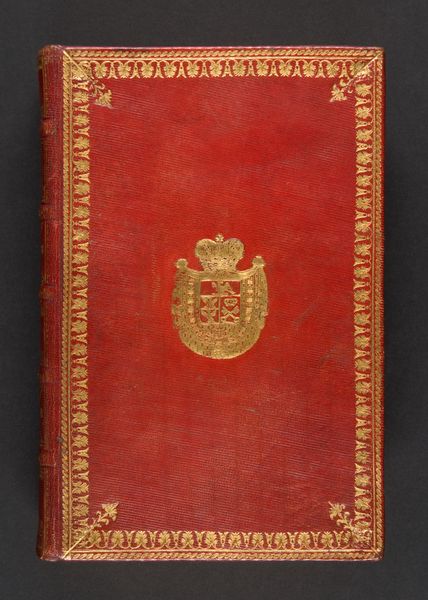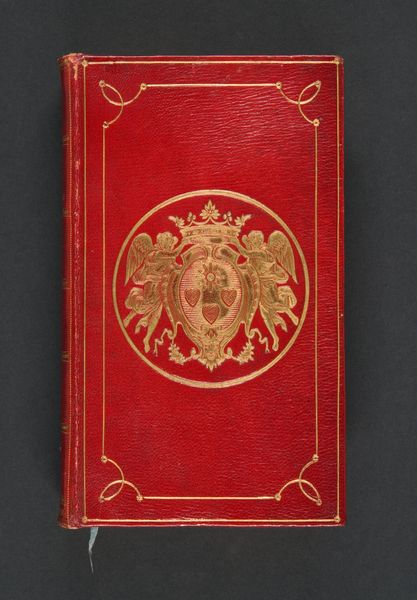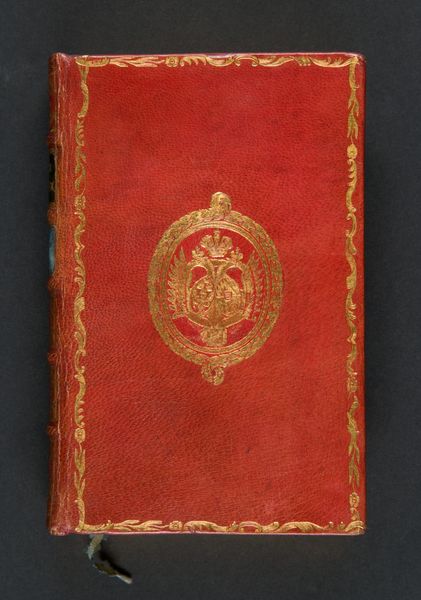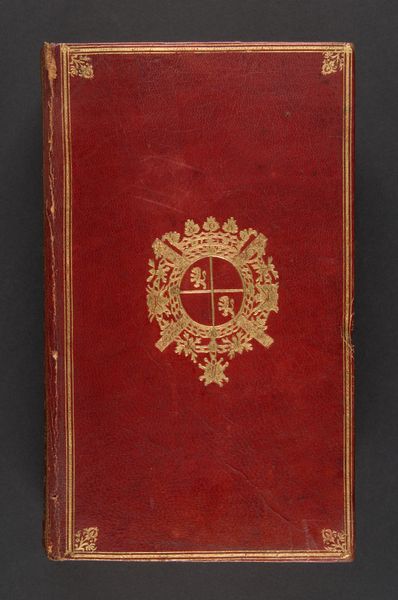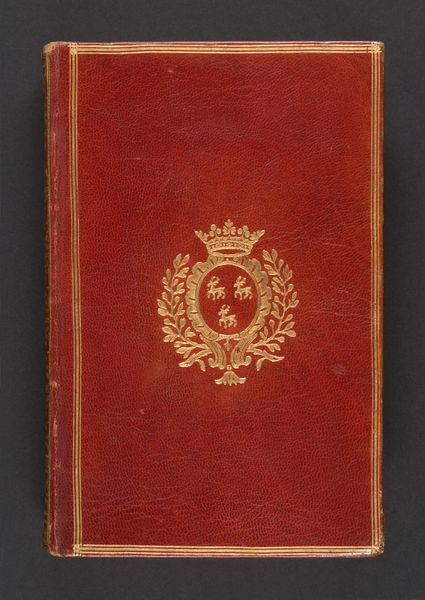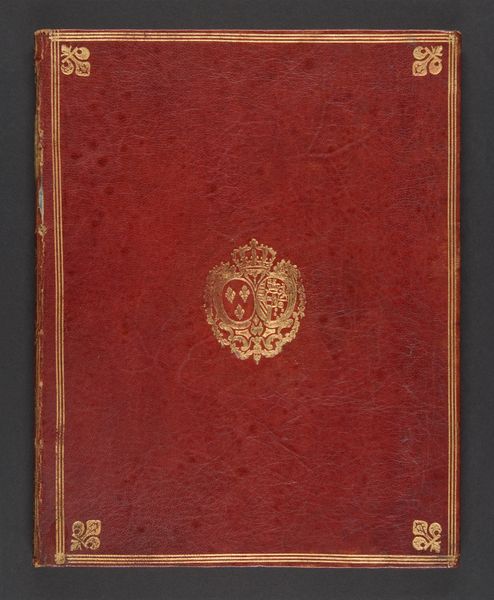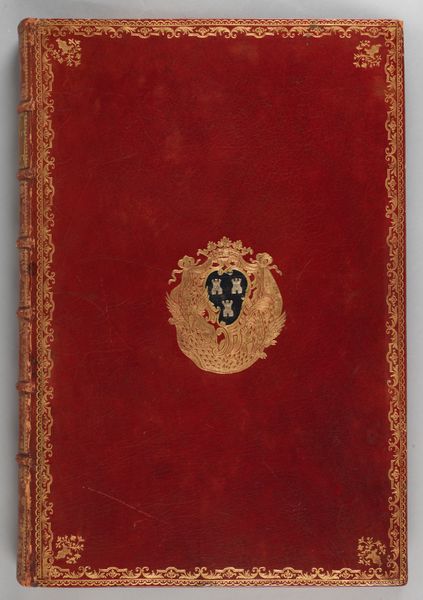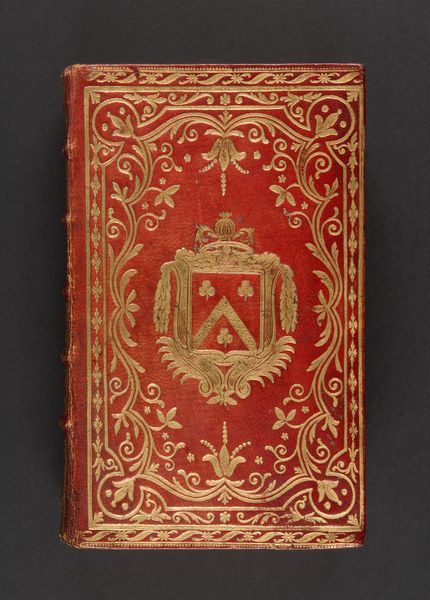
gold
#
medieval
#
book
#
gold
#
geometric pattern
#
geometric
#
decorative-art
#
italy
Dimensions: Length: 9 13/16 in. (25 cm)
Copyright: Public Domain
Editor: This is the "Codice civile generale austriaco," or Austrian General Civil Code, from 1815. It's currently held at the Metropolitan Museum of Art. What really struck me is the red leather binding, and the way the gold tooling just pops. The craftsmanship looks exquisite. What can you tell me about this piece? Curator: Well, let's consider the context. It’s not just about aesthetics; it's about production and consumption. Think about the raw materials: leather, gold. Who had access to these materials in 1815? What kind of labor went into preparing the leather, applying the gold leaf? How did the binding process itself imbue the object with value? Editor: So, you’re suggesting the book's value isn't solely from the legal text within, but from its physical creation and what the materials represent socially? Curator: Exactly. Consider the gold. It wasn’t simply decorative. Gold had tangible, monetary value. Applying it in such an intricate pattern elevated this above a mere functional object. Who was the intended audience? The elite, surely. This book serves as a potent display of power and status through material means. The geometric patterns—are they simply decoration, or do they also speak to a particular understanding of order and structure reflected in the legal code itself? Editor: That makes sense. The book is not only about reading the law but about demonstrating power and wealth, with a very visual, almost theatrical purpose. It also shows how the labor of skilled artisans, the 'means of production', so to speak, can elevate something functional to art. Curator: Precisely! We are looking beyond the surface, interrogating the material realities behind its creation. The sumptous cover doesn’t just 'protect' the text - it announces the status of law within a highly stratified social system. Editor: This has really changed my perception. It’s about understanding the relationship between labor, materials, and social status embedded in a single object. Curator: Yes, every element – the gold, the leather, even the binding – reflects the societal structures of its time. Analyzing art through a material lens helps us to dissect the complex webs of production, power, and meaning.
Comments
No comments
Be the first to comment and join the conversation on the ultimate creative platform.

